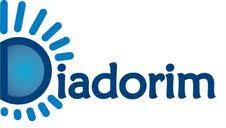Respostas da entomofauna aquática em relação às características do substrato e aos impactos do uso antrópico recreativo em um ambiente lótico
DOI:
https://doi.org/10.12741/2675-9276.v4.e065Palavras-chave:
Bioindicadores, Cachoeira, RiachoResumo
Este trabalho tem como objetivo verificar a resposta da comunidade de insetos aquáticos em relação à intensidade do uso recreativo humano, além da composição em diferentes mesohabitats presentes no curso d’água. As amostras foram coletadas em um córrego em diferentes microhabitats em áreas classificadas pelo uso dos visitantes (Baixo, Médio e Intenso) e diferenciadas em quatro mesohabitats (areia, cachoeira, folha e pedra). Um total de 952 indivíduos distribuídos em nove ordens e 14 famílias foram coletados. A ordem mais abundante foi Diptera (431, 45,27%), seguida de Ephemeroptera (366, 38,45%). A família mais abundante foi Baetidae (325, 34,14%), seguida de Chironomidae (237, 24,89%), Simuliidae (94, 9,87%), Ceratopogonidae (77, 8,08%) e Hydropsychidae (56, 6,09%). Em relação ao uso humano, houve uma diferença significativa na composição da fauna. Na área com uso intenso, houve uma predominância de Chironomidae e Hydroptilidae, enquanto na área de baixo uso, Perlidae foi mais frequente. O substrato de pedra apresentou o maior número de táxons. Observamos uma tendência para a composição da comunidade diferir entre mesohabitats. As necessidades específicas de cada grupo biológico refletem a ocupação do habitat, apresentando diferentes números de indivíduos. Podemos verificar que a intensidade do uso das cachoeiras afeta diretamente a comunidade de insetos aquáticos, seja por perturbação e destruição de microhabitats específicos das espécies ou pelo deslocamento de indivíduos ao longo do curso d’água.
Downloads
Referências
ANDRADE, I.C.P.; KROLOW, T.K.; BOLDRINI, R.; PELICICE, F.M. Diversity of ept (Ephemeroptera, Plecoptera, Trichoptera) along streams fragmented by waterfalls in the Brazilian savanna. Neotropical Entomology, v. 49, p. 203-212, 2020. DOI: https://doi.org/10.1007/s13744-019-00751-z
ARMITAGE, P.D. Behaviour and ecology of adults. p. 194-224. In: ARMITAGE, P.D.; CRANSTON, P.S.; PINDER, L.C.V. (Orgs.). The Chironomidae: biology and ecology of non-biting midges. Chapman & Hall. London, 1995. 572p.
ASTUDILLO, M.R.; NOVELO-GUTIÉRREZ, R.; VÁZQUEZ, G.; GARCÍA-FRANCO, J.G.; RAMÍREZ, A. Relationships between land cover, riparian vegetation, stream characteristics, and aquatic insects in cloud forest streams Mexico. Hydrobiologia, v. 768, p. 167-181. 2016. DOI: https://doi.org/10.1007/s10750-015-2545-1
BAKER, K.; CHADWICK, M.A.; WAHAB, R.A.; KAHAR, R. Benthic community structure and ecosystem functions in above- and below-waterfall pools in Borneo. Hydrobiologia, v. 787, p. 307-322. 2017. DOI: https://doi.org/10.1007/s10750-016-2975-4
BAPTISTA, D.F.; BUSS, D.F.; EGLER, M.; GIOVANELLI, A.; SILVEIRA, M.P.; NESSIMIAN, J.L. A multimetric index based on benthic macroinvertebrates for evaluation of Atlantic Forest streams at Rio de Janeiro state, Brazil. Hydrobiologia, v. 575, n. 1, p. 83-94. 2007. DOI: https://doi.org/10.1007/s10750-006-0286-x
BRASIL, Instituto Brasileiro do Meio Ambiente e dos recursos naturais renováveis. Bioma Cerrado. 2017. Disponível em: <https://antigo.mma.gov.br/biomas/cerrado.html>. Acesso em 10 nov. 2022.
CASTRO, D.M.P.; DOLÉDEC, S.; CALLISTO, M. Land cover disturbance homogenizes aquatic insect functional structure in neotropical savanna streams. Ecological Indicator, v. 84, p. 573-582. 2018. DOI: https://doi.org/10.1016/j.ecolind.2017.09.030
FERREIRA, W.R.; HEPP, L.U.; LIGEIRO, R.; MACEDO, D.R.; HUGHES, R.M.; KAUFMANN, P.R.; CALLISTO, M. Partitioning taxonomic diversity of aquatic insect assemblages and functional feeding groups in neotropical savanna headwater streams. Ecological Indicator, v. 72, p. 365-373. 2017. DOI: https://doi.org/10.1016 /j.ecolind.2016.08.042
FIRMIANO, K.R.; LIGEIRO, R.; MACEDO, D.R.; JUEN, L.; HUGHES, R.M.; CALLISTO, M. Mayfly bioindicator thresholds for several anthropogenic disturbances in neotropical savanna streams. Ecological Indicator, v. 74, p. 276-284. 2017. DOI: https://doi.org/10.1016/j.ecolind.2016.11.033
FRANCISCHETTI, C.N.; SALLES, F.F.; DA-SILVA, R.R.; LUGO-ORTIZ, C.R. First report of Americabaetis kluge (Ephemeroptera: Baetidae) from Rio de Janeiro, Brazil. Entomotropica, v. 18, n. 1, p. 69-71. 2003.
FROEHLICH, C.G. 2007. Guia on-line: identificação de larvas de insetos aquáticos do estado de São Paulo. Disponível em: <http://sites.ffclrp.usp.br/aguadoce/guiaonline> Acessado entre 2019-2020.
GODOY, B.S.; QUEIROZ, L.L.; LODI, S.; OLIVEIRA, L.G. Environment and spatial influences on aquatic insect communities in Cerrado streams: the relative importance of conductivity, altitude, and conservation areas. Neotropical Entomology, v. 46, p. 151-158. 2017. DOI: https://doi.org/10.1007/s13744-016-0452-4
HADWEN, W.L.; BOON, P.L.; ARTHINGTON, A.H. Aquatic ecosystems in inland Australia: tourism and recreational significance, ecological impacts and imperatives for management. Marine Freshwater Research, v. 63, p 325-340. 2012. DOI: https://doi.org/10.1071/MF11198
HAMADA, N. Aspectos ecológicos de Simulium goeldii (Diptera: Simuliidae): relação entre substrato e densidade de larvas. Memórias do Instituto Oswaldo Cruz, v. 84, n. 4, p. 263-266. 1989. DOI: https://doi.org/10.1590/S0074-02761989000800046
HAMMER, O.; HARPER, D.A.T.; RYAN, P.D. Past: paleontological statistics software package for education and data analysis. Palaeontologica Electronica, v. 4, p. 1-9. 2005.
HUGHES, S.J.; SANTOS, J.; FERREIRA, T.; MENDES, A. Evaluating the response of biological assemblages as potential indicators for restoration measures in an intermittent Mediterranean river. Environmental Management, v. 46, p. 285-301. 2010. DOI: https://doi.org/10.1007/s00267-010-9521-3
MIRANDA, R. B.; ESTIGONI, M. V.; MAUAD, F. F. A influência do assoreamento nos reservatórios de centrais hidrelétricas. Sedimentologia Fluvial: Estudos e Técnicas. ABRH, p. 143-178, 2014.
MERRITT, R.W.; CUMMINS, K.W. (Eds.). An introduction to the aquatic insects of north America., kendall/ hunt publishing company, 1996. 1498p.
MONZ, C.A.; PICKERING, C.M.; HADWEN, W.L. Recent advances in recreation ecology and the implications of different relationships between recreation use and ecological impacts. Frontiers in Ecology and the Environment, v. 11, n. 8, p. 441-446. 2013. DOI: https://doi.org/10.1890/120358
MUZÓN, J.; RAMOS, L.S.; PALACIO, A. Urban aquatic insects. pp. 349-364. In: DEL-CLARO, K.; GUILLERMO, R. (Orgs.) Aquatic insects. Springer, 2019. 438p.
ROLDÁN, G., Los macroinvertebrados y su valor como indicadores de la calidad del agua. Revista Acadêmica Colombiana de Ciências, v. 23, n. 88, p. 375-387. 1999.
SETTE, D.M.; TARIFA, J.R. Clima e ambiente urbano tropical: o caso de Rondonópolis-MT. Revista Intergeo, v. 1, p. 26-35. 2001.
SIDDIG, A.A.; ELLISON, A.M.; OCHS, A.; VILLAR-LEEMAN, C,; LAU, M.K. How do ecologists select and use indicator species to monitor ecological change? Insights from 14 years of publication in ecological indicators. Ecological Indicators. v. 60 p. 223-230, 2016. DOI: https://doi.org/10.1016/j.ecolind.2015.06.036
SOUZA, A.L.T.; FONSECA, D.G.; LIBÓRIO, R.A.; TANAKA, M.O. Influence of riparian vegetation and forest structure on the water quality of rural low-order streams in se Brazil. Forest Ecology and Management, v. 298, p. 12-18, 2013. DOI: https://doi.org/10.1016/j.foreco.2013.02.022
VENOHR, M.; LANGHANS, S.D.; PETERS, O.; HÖLKER, F.; ARLINGHAUS, R.; MITCHELL, L.; WOLTER, C. The underestimated dynamics and impacts of water-based recreational activities on freshwater ecosystems. Environmental Reviews, v. 26, n. 2, p. 199-213, 2018. DOI: https://doi.org/10.1139/er-2017-0024
Downloads
Publicado
Como Citar
Edição
Seção
Licença
Copyright (c) 2023 Autor(es)

Este trabalho está licenciado sob uma licença Creative Commons Attribution 4.0 International License.
Entomology Beginners é publicada sob o modelo de Acesso Aberto (Full Open Access) e, portanto, são gratuitas para qualquer pessoa ler, baixar, copiar e divulgar, nos termos da Creative Commons License - CC-By.


















